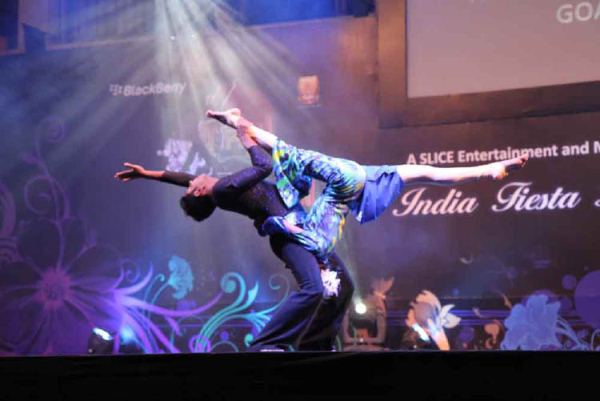Arts
India Dances to Latino Beat

International Latino Dance in New Delhi.
Latino dances are now the world’s hottest cultural diplomacy tool connecting people across continents. And in India, it is the new beat on dance floors.
Dancers say the popularity of Latino dances lies in the inherent joyousness, the friendships it generates on the floor across cultural divides — and the free-flowing body language, open to improvisations.
Last week a world Congress of Latino dances, India Fiesta Latina, brought more than 300 dancers from 30 countries and nearly 3,000 Latino enthusiasts for a four-day gala at the Jaypee Greens hospitality complex in suburban Noida.
“Dances like the salsa, merengue, bachata and mambo are the social dances that can be danced any time, anywhere. You don’t have to know your partner or his culture. You just dance without fear of being misunderstood despite the physical proximity and the diversity of partners. Salsa teaches men to respect women on the floor,” dancer and choreographer Sunil Chopra, co-planner of the India Fiesta Latina, said.
Chopra runs the Mundo Latino dance school with his dancer wife Shallu and Poland-based dancer Neeraj Maskara in the capital’s Greater Kailash area. The school teaches salsa and Spanish to nearly 100 amateur dancers for $30 for six sessions lasting for 90 minutes.
“It is kind of a weekend dance school where we personally teach our students and encourage them to attend Latino dance congresses around the world,” said Chopra, who started training nine years ago with his wife in Miami.

He estimates that Delhi alone has more than 500 dancers from all walks of life and that the number of dancers in India could go up to more than 10,000. Besides, hundreds throng “weeklong classes” organized by various contemporary dance schools.
Latino dances derive from the African rumba rhythm, swing and pachanga beats from Cuba, Puerto Rico, Colombia and Dominican Republic as well as the contemporary R&B and hip-hop genres of free-style dancing. But the elegance is very ballroom, Chopra said.
Homemaker Arti Vij and her husband Shelley, in their 30s, are amongst those who love the “sensuous body movement of salsa and other Latino dances”. They drop in to a salsa dance class in southwest Delhi’s Dwarka every weekend. “I am keen to learn more. It makes me flexible and keeps me in shape as my job is sedentary. It is better than many other outdoor sports and easier,” Shelley said.
“The idea is to look groovy, natural and sensuous on the dance floor,” said Gupsom Pierre, a Singapore-based Latino dancer and instructor.
“The best salsa dancers are emerging from Asia. The Latino dances are all about discipline and overcoming challenges on the dance floor. I always use an element of ballet,” Pierre said.
“Salsa is the same as mambo. Salsa literally means a hot chilli-pepper and vegetable sauce. In the 1950s, a journalist couple, while dancing mambo, said it was like salsa — heady and potent. The name was subsequently adopted. It alludes to the language of the body,” Pierre said.
Latino dances have been drawing their rhythm and language from Bollywood lately, says Polish dancer Gosia Kulpa, who partners dancer Neeraj Maskara of Indian origin from Poland at Latino dance gatherings around the world. “Dances like salsa have some basic rules, but between them there is a bog space to improvise. It is a conversation between the bodies of the couple who pair on the floor. One questions with the body and the other answers,” Kulpa said.
Bollywood movies like “Kites” (which stars Hrithik Roshan as a salsa instructor) “Zindagi Na Milegi Dobara” and “Desi Boyz” have extensively used Latino dances — carrying the genres to the drawing rooms, said bharatanatyam dancer Prathibha Prahlad.
“It is a connection in the deep sensitivity of people… though the roots of Latino music and dance are not the same as Indian dances. These are music and dance of the people belonging to the informal economy, speaking of their angst. Their beats echo in the developing economies of Asia and India,” Juan Alfredo Pinto, ambassador of Colombia to India said.
